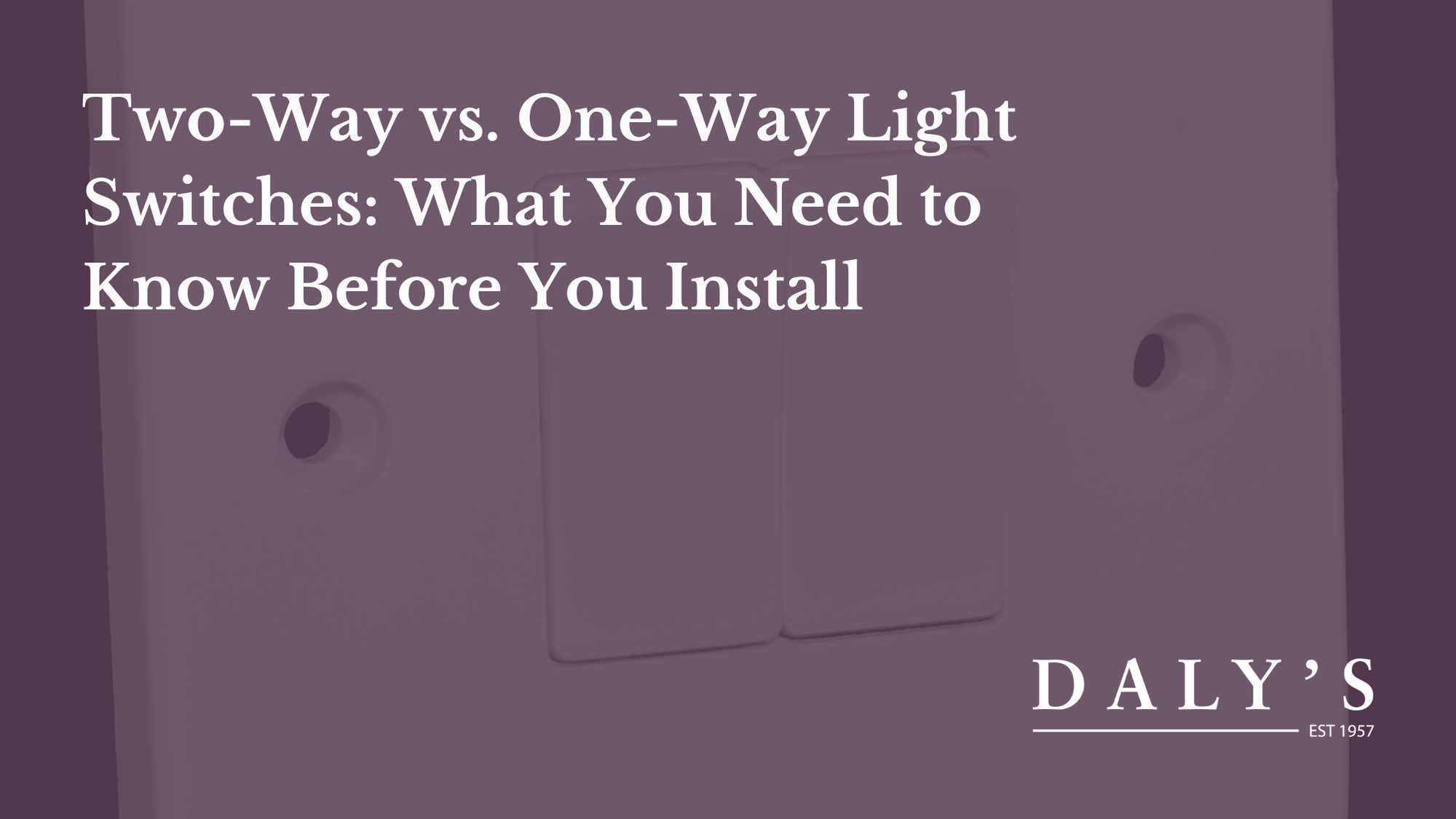Posted by Ali Daly on 22nd Sep 2023
Two-Way vs. One-Way Light Switches: What You Need to Know Before You Install
Welcome back for another chapter of "The Daly Dose." And if you're just joining us—well, you picked a great time to hop on board.
Just so you know, you're about to dive into a detailed article that takes Ali Daly's latest TikTok topic—light switches—and illuminates it even further. Consider this your small go-to guide for everything you ever wanted to know about one-way and two-way switches but didn't think to ask.
In our previous installment, we showed you the ropes on how to use Cavity Toggle Bolts for Heavy Wall Mounting when You Can't Find an Anchor. With Ali being the third-gen from the Daly family to hold the fort at our Limerick City store, you're in good hands.
For this second episode, we're building on Ali Daly's latest TikTok clip by diving deep into the world of light switches. It's not just flicking them on and off; there's actually a science to it that can make your life a whole lot easier.
With the Daly family being a household name in Limerick City for three generations, you can bet we know our way around electricals and interior design. Our expertise is something we're eager to share with all of you.
Two-Way vs. One-Way Light Switches: What You Need to Know Before You Install
The Fundamentals of Switching
Before diving into the differences between two-way and one-way switches, it's essential to understand the basics of how a switch functions. Essentially, a switch either establishes or interrupts an electrical circuit. When the switch contacts are closed, they create a path for electric current to flow, effectively turning on the device it controls. Open contacts block the current, switching off the device.
A Brief History
In 1884, John Henry Holmes pioneered the "quick break" technology, a critical innovation in light switches that quickly separates internal contacts to prevent electric arcing, a fire hazard that also shortens the switch's lifespan. This technological advancement laid the foundation for the domestic and industrial light switches we use today, which continue to leverage quick-break technology.
One-Way vs. Two-Way: What Sets Them Apart?
One-way switches come with two contacts and are the more prevalent type found in homes. They are generally used to control individual lights in smaller rooms. In contrast, a two-way switch combines two one-way switches into a single unit and features an extra, third contact. This extra contact allows you to control a single device—like a light or ceiling fan—from two different locations.
The Advantages of Two-Way Switches
Two-way switches prove invaluable in scenarios requiring control from multiple points, such as staircases, spacious rooms with multiple entrances, or long corridors. Imagine having the convenience of turning off your hallway light from either the bottom or the top of the stairs. Or consider the benefit of controlling a ceiling fan from both your bed and a wall switch.
Choosing the Right Switch for You
One-way switches, also known as single-pole switches, are ideal for simpler, smaller spaces where control from a single location suffices. Conversely, two-way switches are better suited for larger, more complex spaces with multiple points of entry or exit. While user-friendly, two-way switches do demand a somewhat more complex installation process.
Quick Tips for Installation
As previously mentioned, proper installation is vital. Be sure to consult a qualified electrician if you're not comfortable with DIY electrical work. Always switch off the main power supply, label your wires, and ensure compatibility with your home's electrical system before proceeding.
- Label Your Wires: Before removing any existing switches, it's advisable to label each wire to remember its original placement.
- Switch Off the Main Power: Always turn off the main power supply before performing any electrical work to avoid the risk of electric shock.
- Check for Compatibility: Ensure that the switch you're installing is compatible with your home’s electrical system.
- Double-Check the Connections: Before restoring power, double-check all wire connections to ensure they are secure.
- Test Before Finalising: Before sealing up the electrical box, test the switches to make sure they function as intended.
FAQs
- Can I install a two-way switch myself?
- Do I need special wiring for a two-way switch?
- Are smart switches a good alternative?
- What tools do I need for installation?
- Is it possible to convert a one-way switch to a two-way switch?
It's advisable to consult an electrician for complex installations like two-way switches.
Yes, two-way switches require a specific type of wiring called "traveller wires."
Smart switches offer even more flexibility but come at a higher price point.
A screwdriver, wire stripper, and electrical tape are essential for any switch installation.
It's possible but involves additional wiring and should be handled by a professional.
Conclusion
Whether you opt for a one-way or a two-way switch ultimately depends on your specific needs and the layout of your home.
Take the Next Step With Us
If you still have questions or need personalised advice, feel free to get in touch with us through our website's contact form, social media channels or even better, visit us in-store at Daly's Hardware in Limerick City.

